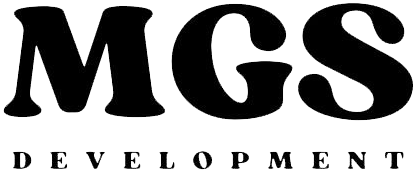Refinancing 101:
How It Works and How to Use It for Home Renovations
Your home isn’t just where you live—it’s one of your biggest investments. Refinancing lets you unlock that investment, helping you save money, change your loan, or turn your renovation dreams into reality.
Here’s a simple guide to understanding refinancing, its pros and cons, and how you can use it to update your home.
What Is Refinancing?
Refinancing replaces your current mortgage with a new one, often with better terms like a lower interest rate or monthly payment. Your lender pays off your old loan, leaving you with just one monthly payment under the new terms.
It’s a smart way to adjust your finances or access extra cash for projects like renovating your kitchen or building a backyard deck.
Refinancing Options for Home Renovations
Not all refinancing is the same. These are the most common types to consider if you’re planning home improvements:
Cash-Out Refinance Borrow more than your current loan balance and get the difference in cash. This is a great choice for funding big projects like adding a room or updating bathrooms.
Rate-and-Term Refinance Swap out your old loan for a new one with a better rate or terms. While this doesn’t provide cash upfront, it can lower monthly payments and free up money for smaller upgrades.
No-Closing-Cost Refinance Avoid paying fees upfront by rolling them into your loan balance. It’s a good option if you want to keep more cash in hand for immediate renovation needs.
How Refinancing Works
The refinancing process is straightforward:
Set Your Goal Decide how much you need for your renovation and whether refinancing aligns with your financial plans.
Pick a Lender Compare lenders to find competitive rates and terms. You don’t have to stick with your current lender.
Apply for the Loan Gather key documents like proof of income, recent bank statements, and tax returns for your application.
Lock Your Rate Once approved, lock in your interest rate to secure your deal.
Appraisal and Underwriting The lender will assess your home’s value to confirm how much equity you have.
Close and Get Funds After closing, you’ll receive the funds to start your renovation.
Pros and Cons of Refinancing
Like any financial decision, refinancing comes with advantages and disadvantages.
Pros:
Lower Interest Rates: Potentially save thousands over the life of your loan.
Lower Monthly Payments: Free up cash for other priorities.
Access to Equity: Use a cash-out refinance to fund renovations or consolidate debt.
Flexibility: Adjust your loan term to better suit your current financial goals.
Cons:
Closing Costs: Refinancing typically costs 3%–6% of the loan amount, which could offset savings.
Longer Loan Term: Extending your loan term can mean paying more interest over time.
Risk of Foreclosure: Borrowing against equity can increase financial risk if your income changes.
Credit Impact: Your credit score may dip temporarily due to the credit inquiry.
Weigh these factors carefully to determine if refinancing is the right move for you
Why Refinance for Renovations?
Refinancing is a practical way to pay for home improvements. Here’s why:
Lower Interest Rates Mortgage rates are typically lower than rates for credit cards or personal loans.
Potential Tax Benefits Interest on a refinance used for renovations may be tax-deductible. (Consult your tax advisor to confirm.)
Boost Your Home’s Value Renovations funded by refinancing can increase your home’s resale value over time.
Make Refinancing Work for You
Refinancing isn’t just about saving—it’s about making your home work for you. Whether you’re envisioning a stunning kitchen remodel, a cozy new addition, or a complete home transformation, refinancing can provide the funds to make it happen.
Ready to bring your vision to life? Our team at Here We Are Construction specializes in turning dream homes into reality. Contact us today for expert guidance, innovative design solutions, and quality construction that will elevate your home to the next level!
-
The amount depends on your home’s equity and its appraised value.
-
Refinancing usually takes 30–45 days.
-
Your credit score may dip temporarily when your lender checks your credit, but it should recover quickly with on-time payments.
Legal Disclaimer: This article is for informational purposes only and does not constitute financial or legal advice. Refinancing options and outcomes vary based on individual circumstances, and readers are encouraged to consult with a qualified financial advisor, tax professional, or lender to determine the best course of action for their specific needs. HWA Construction assumes no responsibility for actions taken based on this information and recommends independent due diligence for all financial decisions.



